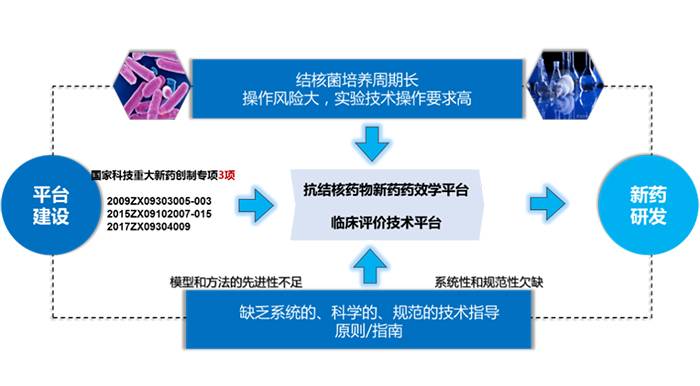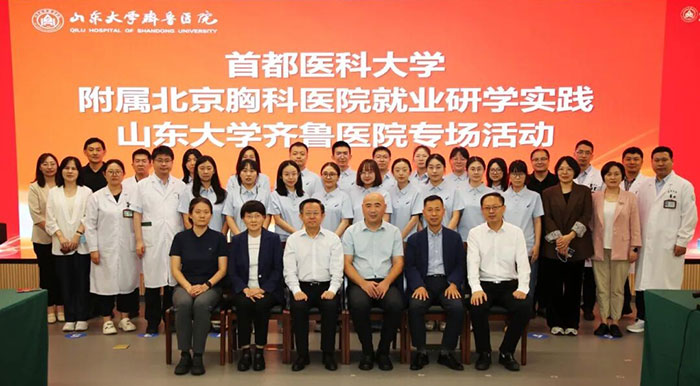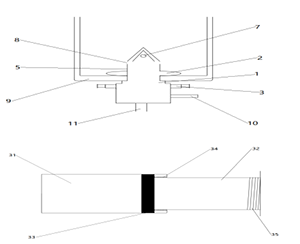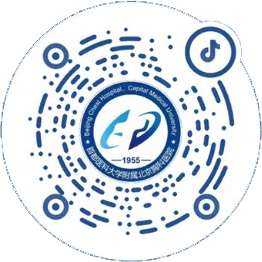2024年
No.12
PubMed
(tuberculosis[Title/Abstract]) OR (lung cancer[Title/Abstract])
Filters applied: from 2024/12/1 - 2024/12/31
1. Ann Oncol. 2024 Dec;35(12):1088-1104. doi: 10.1016/j.annonc.2024.10.006. Epub 2024 Oct 15.
Lung cancer research and treatment: global perspectives and strategic calls to action.
Meyer ML(1), Peters S(2), Mok TS(3), Lam S(4), Yang PC(5), Aggarwal C(6)
BACKGROUND: Lung cancer remains a critical public health issue, presenting multifaceted challenges in prevention, diagnosis, and treatment. This article aims to review the current landscape of lung cancer research and management, delineate the persistent challenges, and outline pragmatic solutions.
MATERIALS AND METHODS: Global experts from academia, regulatory agencies such as the Food and Drug Administration (FDA) and the European Medicines Agency (EMA), the National Cancer Institute (NCI), professional societies, the pharmaceutical and biotech industries, and patient advocacy groups were gathered by the New York Lung Cancer Foundation to review the state of the art in lung cancer and to formulate calls to action.
RESULTS: Improving lung cancer management and research involves promoting tobacco cessation, identifying individuals at risk who could benefit from early detection programs, and addressing treatment-related toxicities. Efforts should focus on conducting well-designed trials to determine the optimal treatment sequence. Research into innovative biomarkers and therapies is crucial for more personalized treatment. Ensuring access to appropriate care for all patients, whether enrolled in clinical trials or not, must remain a priority.
CONCLUSIONS: Lung cancer is a major health burden worldwide, and its treatment has become increasingly complex over the past two decades. Improvement in lung cancer management and research requires unified messaging and global collaboration, expanded education, and greater access to screening, biomarker testing, treatment, as well as increased representativeness, participation, and diversity in clinical trials.
PMID: 39413875 [Indexed for MEDLINE]
2. Adv Sci (Weinh). 2024 Dec;11(46):e2409356. doi: 10.1002/advs.202409356. Epub 2024 Oct 18.
TIL Therapy in Lung Cancer: Current Progress and Perspectives.
Hu W(1)(2)(3), Bian Y(2)(3), Ji H(1)(2)(3)(4)
Lung cancer remains the most prevalent malignant tumor worldwide and is the leading cause of cancer-related mortality. Although immune checkpoint blockade has revolutionized the treatment of advanced lung cancer, many patients still do not respond well, often due to the lack of functional T cell infiltration. Adoptive cell therapy (ACT) using expanded immune cells has emerged as an important therapeutic modality. Tumor-infiltrating lymphocytes (TIL) therapy is one form of ACT involving the administration of expanded and activated autologous T cells derived from surgically resected cancer tissues and reinfusion into patients and holds great therapeutic potential for lung cancer. In this review, TIL therapy is introduced and its suitability for lung cancer is discussed. Then its historical and clinical developments are summarized, and the methods developed up-to-date to identify tumor-recognizing TILs and optimize TIL composition. Some perspectives toward future TIL therapy for lung cancer are also provided.
PMID: 39422665 [Indexed for MEDLINE]
3. Arthritis Rheumatol. 2024 Dec;76(12):1730-1738. doi: 10.1002/art.42961. Epub 2024 Aug 16.
The Risk of Lung Cancer in Rheumatoid Arthritis and Rheumatoid Arthritis-Associated Interstitial Lung Disease.
Brooks RT(1), Luedders B(2), Wheeler A(2), Johnson TM(2), Yang Y(2), Roul P(2)
OBJECTIVE: We aimed to evaluate lung cancer risk in patients with rheumatoid arthritis (RA) and RA-interstitial lung disease (ILD).
METHODS: We performed a retrospective, matched cohort study of RA and RA-ILD within the Veterans Health Administration (VA) between 2000 and 2019. Patients with RA and RA-ILD were identified with validated administrative-based algorithms, then matched (up to 1:10) on age, gender, and VA enrollment year to individuals without RA. Lung cancers were identified from a VA oncology database and the National Death Index. Conditional Cox regression models assessed lung cancer risk adjusting for race, ethnicity, smoking status, Agent Orange exposure, and comorbidity burden among matched individuals. Several sensitivity analyses were performed.
RESULTS: We matched 72,795 patients with RA with 633,937 patients without RA (mean age 63 years; 88% male). Over 4,481,323 patient-years, 17,099 incident lung cancers occurred. RA was independently associated with an increased lung cancer risk (adjusted hazard ratio [aHR] 1.58 [95% confidence interval (CI) 1.52-1.64]), which persisted in never smokers (aHR 1.65 [95% CI 1.22-2.24]) and in those with incident RA (aHR 1.54 [95% CI 1.44-1.65]). Compared to non-RA controls, prevalent RA-ILD (n = 757) was more strongly associated with lung cancer risk (aHR 3.25 [95% CI 2.13-4.95]) than RA without ILD (aHR 1.57 [95% CI 1.51-1.64]). Analyses of both prevalent and incident RA-ILD produced similar results (RA-ILD vs non-RA aHR 2.88 [95% CI 2.45-3.40]).
CONCLUSION: RA was associated with a >50% increased risk of lung cancer, and those with RA-ILD represented a particularly high-risk group with an approximate three-fold increased risk. Increased lung cancer surveillance in RA, and especially RA-ILD, may be a useful strategy for reducing the burden posed by the leading cause of cancer death.
PMID: 39073264 [Indexed for MEDLINE]
4. Lancet Respir Med. 2024 Dec;12(12):997-1005. doi: 10.1016/S2213-2600(24)00124-3. Epub 2024 Jun 14.
Biological and therapeutic implications of the cancer-related germline mutation landscape in lung cancer.
Panagiotou E(1), Vathiotis IA(2), Makrythanasis P(3), Hirsch F(4), Sen T(5)
Although smoking is the primary cause of lung cancer, only about 15% of lifelong smokers develop the disease. Moreover, a substantial proportion of lung cancer cases occur in never-smokers, highlighting the potential role of inherited genetic factors in the cause of lung cancer. Lung cancer is significantly more common among those with a positive family history, especially for early-onset disease. Therefore, the presence of pathogenic germline variants might act synergistically with environmental factors. The incorporation of next-generation sequencing in routine clinical practice has led to the identification of cancer-predisposing mutations in an increasing proportion of patients with lung cancer. This Review summarises the landscape of germline susceptibility in lung cancer and highlights the importance of germline testing in patients diagnosed with the disease, which has the potential to identify individuals at risk, with implications for tailored therapeutic approaches and successful prevention through genetic counselling and screening.
PMID: 38885686 [Indexed for MEDLINE]
5. Ageing Res Rev. 2024 Dec;102:102576. doi: 10.1016/j.arr.2024.102576. Epub 2024 Nov 7.
Epithelial-mesenchymal transition to mitigate age-related progression in lung cancer.
Thapa R(1), Gupta S(2), Gupta G(3), Bhat AA(1), Smriti(4), Singla M(4), Ali H(5)
Epithelial-Mesenchymal Transition (EMT) is a fundamental biological process involved in embryonic development, wound healing, and cancer progression. In lung cancer, EMT is a key regulator of invasion and metastasis, significantly contributing to the fatal progression of the disease. Age-related factors such as cellular senescence, chronic inflammation, and epigenetic alterations exacerbate EMT, accelerating lung cancer development in the elderly. This review describes the complex mechanism among EMT and age-related pathways, highlighting key regulators such as TGF-β, WNT/β-catenin, NOTCH, and Hedgehog signalling. We also discuss the mechanisms by which oxidative stress, mediated through pathways involving NRF2 and ROS, telomere attrition, regulated by telomerase activity and shelterin complex, and immune system dysregulation, driven by alterations in cytokine profiles and immune cell senescence, upregulate or downregulate EMT induction. Additionally, we highlighted pathways of transcription such as SNAIL, TWIST, ZEB, SIRT1, TP53, NF-κB, and miRNAs regulating these processes. Understanding these mechanisms, we highlight potential therapeutic interventions targeting these critical molecules and pathways.
PMID: 39515620 [Indexed for MEDLINE]
6. J Thorac Oncol. 2024 Dec;19(12):1606-1617. doi: 10.1016/j.jtho.2024.07.022. Epub 2024 Aug 2.
From the International Association for the Study of Lung Cancer Early Detection and Screening Committee.
INTRODUCTION: To facilitate global implementation of lung cancer (LC) screening and early detection in a quality assured and consistent manner, common terminology is needed. Researchers and clinicians within different specialties may use the same terms but with different meanings or different terms for the same intended meanings.
METHODS: The Diagnostics Working Group of the International Association for the Study of Lung Cancer Early Detection and Screening Committee has analyzed and discussed relevant terms used on a regular basis and suggests recommendations for consensus definitions of terminology applicable in this setting. We explored how to reach consensus to define relevant and unambiguous terminology for use by health care providers, researchers, patients, screening participants, and family.
RESULTS: Terms and definitions for epidemiologic and health-economical purposes included the following: standardized incidence and mortality rates, LC-specific survival, long-term survival and cure rates, overdiagnosis, overtreatment, and undertreatment. Terms and definitions for defining screening findings included the following: positive, false-positive, negative, false-negative, and indeterminate findings and additional and incidental findings. Terms and definitions for describing parameters in screening programs included the following: opportunistic versus programmatic screening, screening rounds, interval or interim diagnoses, and invasive and minimally invasive procedures. Terms and definitions for shared decision-making included the following: LC screening-possible harms and risks and LC risk and modifiers prior and posterior to a measure.
CONCLUSIONS: A common set of terminology with standard definitions is recommended for describing clinical LC screening programs, the discussion about effectiveness and outcomes, or the clinical setting. The use of the terms should be clearly defined and explained.
PMID: 39098452 [Indexed for MEDLINE]
7. Cancer Res. 2024 Dec 16;84(24):4140-4155. doi: 10.1158/0008-5472.CAN-24-0585.
The Innate Immune System and the TRAIL-Bcl-XL Axis Mediate a Sex Bias in Lung Cancer and Confer a Therapeutic Vulnerability in Females.
May L(1), Hu B(2), Jerajani P(1), Jagdeesh A(1), Alhawiti O(1), Cai L(1)
There is a significant sex bias in lung cancer, with males showing increased mortality compared with females. A better mechanistic understanding of these differences could help identify therapeutic targets to personalize cancer therapies to each sex. After observing a clear sex bias in humanized mice, with male patient-derived xenograft lung tumors being more progressive and deadlier than female patient-derived xenograft lung tumors, we identified mouse tumor models of lung cancer with the same sex bias. This sex bias was not observed in models of breast, colon, melanoma, and renal cancers. In vivo, the sex bias in growth and lethality required intact ovaries, functional innate NK cells and monocytes/macrophages, and the activating receptor NKG2D. Ex vivo cell culture models were sensitized to the anticancer effects of NKG2D-mediated NK cell and macrophage killing through the TRAIL-Bcl-XL axis when cultured with serum from female mice with intact ovaries. In both flank and orthotopic models, the Bcl-XL inhibitor navitoclax (ABT-263) improved tumor growth control in female mice and required NK cells, macrophages, and the TRAIL signaling pathway. This research suggests that navitoclax and TRAIL pathway agonists could be used as a personalized therapy to improve outcomes in women with lung cancer. Significance: Lung cancers in females are more susceptible to killing through a TRAIL-Bcl-XL axis, indicating that targeting this axis therapeutically could represent a personalized approach to treat female patients with lung cancer.
PMID: 39312191 [Indexed for MEDLINE]
8. Cell Mol Immunol. 2024 Dec;21(12):1426-1440. doi: 10.1038/s41423-024-01230-1. Epub 2024 Oct 22.
Kynurenine-AhR reduces T-cell infiltration and induces a delayed T-cell immune response by suppressing the STAT1-CXCL9/CXCL10 axis in tuberculosis.
Liu X(#)(1), Yang M(#)(1), Xu P(#)(2), Du M(2), Li S(1), Shi J(3), Li Q(3), Yuan J(4)
Tuberculosis, caused by Mycobacterium tuberculosis (Mtb), is a critical global health issue that is complicated by the ability of the pathogen to delay the host's T-cell immune response. This delay in T-cell recruitment to the site of infection is a pivotal survival strategy for Mtb, allowing it to establish a persistent chronic infection. To investigate the underlying mechanisms, this study focused on Mtb's exploitation of host tryptophan metabolism. Mtb upregulates indoleamine 2,3-dioxygenase 1 (IDO1) in inflammatory macrophages, thereby increasing kynurenine (Kyn) production. Kyn then activates the aryl hydrocarbon receptor (AhR), leading to the upregulation of suppressor of cytokine signaling 3 and subsequent inhibition of the JAK-STAT1 signaling pathway. This results in reduced secretion of the chemokines CXCL9 and CXCL10, which are crucial for T-cell recruitment to the lungs. Supported by in vivo mouse models, our findings reveal that disrupting this pathway through AhR knockout significantly enhances T-cell infiltration and activity, thereby undermining Mtb-induced immunosuppression. In contrast, additional Kyn injection obviously inhibited T-cell infiltration and activity. These results highlight potential therapeutic targets of AhR and IDO1, offering new avenues for enhancing the host immune response against tuberculosis and guiding future vaccine development efforts.
PMID: 39438693 [Indexed for MEDLINE]
9. Lancet Child Adolesc Health. 2024 Dec;8(12):891-899. doi: 10.1016/S2352-4642(24)00256-6. Epub 2024 Nov 5.
Mycobacterium tuberculosis infection and tuberculosis disease in the first decade of life: a South African birth cohort study.
da Costa FBP(1), Nicol MP(2), Botha M(3), Workman L(3), Arcêncio RA(1), Zar HJ(4)
BACKGROUND: Paediatric tuberculosis leads to more than 200 000 deaths annually. We aimed to investigate the incidence of Mycobacterium tuberculosis infection and tuberculosis disease in the first decade of life in the Drakenstein Child Health Study (DCHS), a South African cohort in a community with high tuberculosis and HIV incidence.
METHODS: In this prospective birth cohort study, we enrolled pregnant women aged 18 years or older who were between 20 and 28 weeks' of gestation in a peri-urban setting outside of Cape Town, South Africa. We followed up their children for tuberculosis until age 10 years. To measure M tuberculosis infection tuberculin skin tests were administered to children at age 6 months, 12 months, and then annually in children with a negative test, and at the time of a lower respiratory tract infection. Tuberculin skin test conversion was defined by an induration reaction of 10 mm or more. To measure tuberculosis disease, active surveillance was done throughout follow-up. Each episode of presumed tuberculosis disease was investigated using sputum induction, tested with Xpert MTB/RIF and liquid culture for M tuberculosis. Survival analyses were performed and multivariable Cox regression was used to measure factors associated with M tuberculosis infection or disease.
FINDINGS: Between March 5, 2012, and March 31, 2015, 1137 women and their 1143 children (248 [21·7%] of 1143 children were HIV-exposed, two [0·2%] children with HIV) were included in the analysis. Children were followed up for 8870 person-years (median follow-up 9·1 years [IQR 8·2-10·2]). The annual risk of tuberculin conversion during follow-up was 6·6 infections per 100 person-years (95% CI 5·8-7·3) but ranged from 4-9 infections per 100 person-years over the follow-up period. 98 children developed tuberculosis (1105 cases per 100 000 person-years; 95% CI 906-1347). The cumulative hazard of tuberculin conversion was 36% (95% CI 32-41) at age 8 years and the cumulative hazard of tuberculosis disease was 10% (8-12) at age 10 years. Preventive treatment was associated with a reduction in tuberculosis disease among children who had tuberculin conversion (adjusted hazard ratio 0·23 [95% CI 0·12-0·47]). Most cases of tuberculosis disease (78 [79%; 95% CI 69-86] of 98 children) occurred among children who had tuberculin skin test conversion but were not administered preventive treatment.
INTERPRETATION: In this prospective South African birth cohort, M tuberculosis transmission was consistently high throughout the first decade of life leading to approximately 10% of children developing tuberculosis disease. A multipronged approach to decrease paediatric tuberculosis is needed that combines preventive treatment for children at risk, reducing community M tuberculosis transmission, and active case finding.
PMID: 39515364 [Indexed for MEDLINE]
10. Cell Host Microbe. 2024 Dec 11;32(12):2092-2111.e7. doi: 10.1016/j.chom.2024.11.008. Epub 2024 Dec 4.
Type I IFN-mediated NET release promotes Mycobacterium tuberculosis replication and is associated with granuloma caseation.
Chowdhury CS(1), Kinsella RL(1), McNehlan ME(1), Naik SK(1), Lane DS(2)
Neutrophils are the most abundant cell type in the airways of tuberculosis patients. Mycobacterium tuberculosis (Mtb) infection induces the release of neutrophil extracellular traps (NETs); however, the molecular regulation and impact of NET release on Mtb pathogenesis are unknown. We find that during Mtb infection in neutrophils, PAD4 citrullinates histones to decondense chromatin that gets released as NETs in a manner that can maintain neutrophil viability and promote Mtb replication. Type I interferon promotes the formation of chromatin-containing vesicles that allow NET release without compromising plasma membrane integrity. Analysis of nonhuman primate granulomas supports a model where neutrophils are exposed to type I interferon from macrophages as they migrate into the granuloma, thereby enabling the release of NETs associated with necrosis and caseation. Our data reveal NET release as a promising target to inhibit Mtb pathogenesis.
PMID: 39637864 [Indexed for MEDLINE]
11. J Thorac Oncol. 2024 Dec 19:S1556-0864(24)02535-8. doi: 10.1016/j.jtho.2024.12.016. Online ahead of print.
Prospective evaluation of lung cancer screening eligibility criteria and lung cancer detection in the Yorkshire Lung Screening Trial.
Gabe R(1), Crosbie PAJ(2), Vulkan D(2), Bailey H(3), Baldwin DR(4), Bradley C(3)
INTRODUCTION: Low dose CT (LDCT) screening for lung cancer reduces lung cancer mortality, but there is a lack of international consensus regarding the optimal eligibility criteria for screening. The Yorkshire Lung Screening Trial (YLST) was designed to evaluate lung cancer screening (LCS) implementation and a primary objective was prospective evaluation of 3 pre-defined eligibility criteria.
METHODS: Individuals who had ever smoked, aged 55-80yrs, who responded to written invitation, underwent telephone risk assessment and if eligible by at least one criteria (PLCOM2012≥1.51%, LLPv2≥5%, USPSTF2013) were offered biennial LDCT screening.
RESULTS: Of 44,957 individuals invited, 22,814 responded and underwent eligibility assessment, of whom a total of 7,826 were eligible according to any of the three LCS criteria. Comparing PLCOM2012≥1.51%, LLPv2≥5%, and USPSTF2013, the proportions of responders eligible for screening were 28.0%, 20.5% and 18.9% respectively (p<0.0001 for each comparison), and the proportion of all cancers detected 91.1%, 77.0%, and 62.8% respectively (p≤0.0002 for each comparison). When risk thresholds were selected to result in equivalent numbers of people eligible for screening, cancer detection proportions were higher for PLCOM2012 (74.5%) and LLPv2 (71.3%) than USPSTF2013 (62.8%) (p=0.0002 and p=0.032 respectively) but there was no significant difference between the two risk models. Reducing the LLPv2 risk threshold from 5% to 2.5% (as currently used in the English lung cancer screening programme) and reducing the pack-year requirement for the USPSTF2021 vs the USPSTF2013 criteria increased the numbers eligible for screening, but subsequent cancer yield was not measured in this study.
CONCLUSION: The PLCOM2012≥1.51% criteria identified more people eligible for screening in YLST and resulted in more screen-detected lung cancers than LLPv2≥5% or USPSTF2013. When compared in equivalent populations, there was no significant difference between risk models in terms of lung cancer detection and each appeared more efficient at screening population selection than USPSTF2013.
PMID: 39709114
12. N Engl J Med. 2024 Dec 19;391(24):2304-2314. doi: 10.1056/NEJMoa2314325.
Levofloxacin for the Prevention of Multidrug-Resistant Tuberculosis in Vietnam.
Fox GJ(1), Nhung NV(1), Cam Binh N(1), Hoa NB(1), Garden FL(1), Benedetti A(1)
BACKGROUND: Prevention of drug-resistant tuberculosis is a global health priority. However, trials evaluating the effectiveness of treating Mycobacterium tuberculosis infection among contacts of persons with drug-resistant tuberculosis are lacking.
METHODS: We conducted a double-blind, randomized, controlled trial comparing 6 months of daily levofloxacin (weight-based doses) with placebo to treat M. tuberculosis infection. The trial population comprised household contacts of persons with bacteriologically confirmed rifampicin-resistant or multidrug-resistant (MDR) tuberculosis in Vietnam. Contacts of any age with a positive tuberculin skin test or immunologic impairment were eligible. The primary end point was bacteriologically confirmed tuberculosis within 30 months. Secondary end points included grade 3 or 4 adverse events, death from any cause, and acquired drug resistance.
RESULTS: Of 3948 persons screened for eligibility, 61 (1.5%) had coprevalent tuberculosis (defined as active tuberculosis disease diagnosed before randomization) and 2041 underwent randomization. Of these 2041 participants, 1995 (97.7%) completed 30 months of follow-up, had a primary end-point event, or died. Confirmed tuberculosis occurred in 6 participants (0.6%) in the levofloxacin group and 11 (1.1%) in the placebo group (incidence rate ratio, 0.55; 95% confidence interval [CI], 0.19 to 1.62); this difference was not significant. There was little difference in grade 3 or 4 adverse events between the two groups (risk difference, 1.0 percentage point; 95% CI, -0.3 to 2.4). Adverse events of any grade were reported in 306 participants (31.9%) taking levofloxacin and 125 (13.0%) taking placebo (risk difference, 18.9 percentage points; 95% CI, 14.2 to 23.6). No acquired fluoroquinolone resistance was observed.
CONCLUSIONS: Although the incidence of tuberculosis was lower in the levofloxacin group than in the placebo group at 30 months, the difference was not significant. (Funded by the National Health and Medical Research Council of Australia; VQUIN MDR Australia New Zealand Clinical Trials Registry number, ACTRN12616000215426.).
PMID: 39693541 [Indexed for MEDLINE]
13. J Thorac Oncol. 2024 Dec 30: S1556-0864(24)02546-2. doi: 10.1016/j.jtho.2024.12.025. Online ahead of print.
Brief Report: Evaluating Early-Stage Lung Cancer Survival Patterns in Patients at the Upper Age Limit for Lung Cancer Screening.
Warkentin MT(1), Tammemägi MC(2), Vakil E(3), Bedard ELR(4), Cheung WY(1)
INTRODUCTION: Older individuals have an elevated lung cancer risk but may also have significant comorbidities that preclude curative treatment options and limit the survival benefits of screening. The objective of this study was to assess early-stage lung cancer survival patterns among those at the upper age limit for screening and identify older individuals who have potential to benefit from for lung cancer screening.
METHODS: We identified all early stage (I or II) lung cancers diagnosed in Alberta, Canada between 2010 and 2020. Overall survival (OS) was based on the time from the date of lung cancer diagnosis until the date of death (from any cause) or censoring. We estimated OS using the Kaplan-Meier method. We present OS with 95% confidence intervals (CI) for each age group and sex and stratified by presence of comorbidities (Charlson Comorbidity Index) and receipt of surgery.
RESULTS: There were 6,401 early-stage lung cancers (71% stage I, 29% stage II) of which 43% and 57% were among males and females, respectively. For females, the five-year OS was 54.7% (CI: 50.6-58.8), 47.2% (CI: 42.7-51.7) and 33.7% (CI: 28.4-38.9) for ages 70-74, 75-79, and 80-84, respectively. For males, five-year OS was 47.7% (CI: 43.1-52.3), 38.0% (CI:33.2-42.8), and 24.2% (CI: 19.2-29.3) for ages 70-74, 75-79 and 80-84, respectively. Across all age groups, the five-year OS was higher for those with fewer comorbidities and for those who received surgery as part of their treatment strategy, usually surpassing that in younger cohorts with more comorbidities or who did not receive surgical treatment.
CONCLUSIONS: Age limits for lung cancer screening should consider comorbidity and fitness for curative treatment since these can significantly influence the survival following diagnosis and treatment of early lung cancer.
PMID: 39743140
14. J Thorac Oncol. 2024 Dec 13:S1556-0864(24)02526-7. doi: 10.1016/j.jtho.2024.12.007. Online ahead of print.
The International Association for the Study of Lung Cancer Lung Cancer Staging Project: Application and Interpretation of the Residual Tumor (R) Classification for Lung Cancer. Results from an International Survey among Pathologists and Thoracic Surgeons.
Hoffmann H(1), Nicholson AG(2), Detterbeck FC(3), Tsao MS(4), Ostrowski M(5)
OBJECTIVE: The study aimed to assess the opinion of pathologists and thoracic surgeons of the International Association for the Study of Lung Cancer (IASLC) regarding application and interpretation of the residual tumor (R) classification for lung cancer.
METHODS: Based on their membership-profile a total of n=623 pathologists and thoracic surgeons were identified and contacted by email with a cover letter and a link to an online survey. The questionnaire consisted of 12 questions about various aspects on application and interpretation of the R classification for lung cancer. The response rate (to at least one question) was 72% (144 pathologists and 303 surgeons).
RESULTS: Frequency of use of the R classification varies by geographic region. While R status is regularly reported in Europe and Asia, seventy percent of pathologists in the US or Canada never include R status on reports. Similar variation exists about who assigns the R category for the resection - in Europe and the UK it is mainly the pathologist, whilst in China/Japan and US it is the surgeon. There are some good agreements about margins examined and how to manage staple lines. The category "uncertain resection" R(un) has not been practically implemented in most of the world, except at some centers in Japan and the UK.
CONCLUSION: This survey shows that surgical resection margins are part of routine reporting in most institutions, but assignment of an R category is not always part of the pathology report, with considerable variation between countries. Application of R(un) has not been taken up by most institutions, despite IASLC proposals, and further evidence is needed.
PMID: 39675507
15. N Engl J Med. 2024 Dec 19;391(24):2315-2326. doi: 10.1056/NEJMoa2314318.
Levofloxacin Preventive Treatment in Children Exposed to MDR Tuberculosis.
Hesseling AC(1), Purchase SE(1), Martinson NA(1), Fairlie L(1), Schaaf HS(1)
BACKGROUND: Worldwide, approximately 2 million children younger than 15 years of age are infected with multidrug-resistant (MDR) Mycobacterium tuberculosis, with MDR tuberculosis developing in approximately 30,000 annually. Evidence from randomized, controlled trials on tuberculosis preventive treatment in persons exposed to MDR tuberculosis is lacking.
METHODS: In this community-based, multisite, double-blind, cluster-randomized, placebo-controlled trial in South Africa, we assessed the efficacy and safety of levofloxacin as preventive treatment in children with household exposure to an adult with bacteriologically confirmed MDR pulmonary tuberculosis. Children younger than 5 years of age were eligible for inclusion regardless of interferon-γ release assay result or human immunodeficiency virus (HIV) status, and children 5 to 17 years of age were eligible if they had a positive interferon-γ release assay or HIV infection. Households were randomly assigned to a trial regimen, and children in the household received levofloxacin or placebo once daily for 24 weeks. The primary efficacy end point was incident tuberculosis, which included death from tuberculosis, by week 48 after randomization. The primary safety end point was any adverse event of grade 3 or higher during the treatment period that was at least possibly related to the trial regimen.
RESULTS: Of 922 participants from 497 households, 453 were assigned to receive levofloxacin and 469 to placebo; 91.0% of the participants were younger than 5 years of age. At least 80% of the assigned doses of levofloxacin or placebo were received by 86% of the participants in each trial group. By week 48, tuberculosis had developed in 5 participants (1.1%) in the levofloxacin group and in 12 participants (2.6%) in the placebo group (hazard ratio, 0.44; 95% confidence interval [CI], 0.15 to 1.25). The results of sensitivity analyses were consistent with those of the primary analysis. Grade 3 or higher adverse events during the treatment period that were considered to be at least possibly related to the trial regimen occurred in 4 participants in the levofloxacin group and in 8 participants in the placebo group (hazard ratio, 0.52; 95% CI, 0.16 to 1.71). Grade 2 tendonitis occurred in 1 child in the levofloxacin group.
CONCLUSIONS: Although preventive treatment with levofloxacin led to a lower incidence of tuberculosis than placebo among children with household exposure to MDR tuberculosis, the difference was not significant. (Supported by Unitaid and others; TB-CHAMP ISRCTN Registry number, ISRCTN92634082.).
PMID: 39693542 [Indexed for MEDLINE]
16. Nat Commun. 2024 Dec 2;15(1):10475. doi: 10.1038/s41467-024-54419-3.
PET-CT outcomes from a randomised controlled trial of rosuvastatin as an adjunct to standard tuberculosis treatment.
Cross GB(1)(2)(3)(4), Sari IP(5), Burkill SM(6), Yap CW(7), Nguyen H(8)(9)
Adjunctive rosuvastatin for rifampicin-susceptible pulmonary tuberculosis (rs-PTB) shows no effect on microbiological or radiological outcomes in a phase IIb randomised, controlled trial (NCT04504851). We explore the impact of adjunctive rosuvastatin on 18F-fluorodeoxyglucose (FDG) positron emission tomography-computed tomography (PET-CT) imaging in a sub-study of 24 participants. Changes in standardised uptake value (SUVmax, SUVmean), Total Metabolic Volume, (TMV), Total Lesion Glycolysis (TLG), cavity diameter and volume, between week 0 and week 8 post-randomisation, are evaluated. Here we show no evidence of difference in the reduction in TLG [median 65.8% for the rosuvastatin group (Q1, Q3 38.6, 94.5) vs 64.3% for standard tuberculosis treatment group (Q1, Q3 -20.0, 81.7), P = 0.32], reduction in cavity volume on CT [median 3.2 cm3 (IQR 11.1, 0.5) for rosuvastatin, 2.2 cm3 (IQR 4.6, 0.7) for control (p = 0.72)], or any other PET-CT parameter measured. We show that the first 8-weeks of standard tuberculosis treatment results in a reduction in the volumetric indices (TLG and TMV), but had little change in SUVmax or SUVmean. Change in TLG and TMV holds promise as biomarkers of tuberculosis treatment response: future PET-CT studies should evaluate their role in predicting relapse-free cure, and the overall role of 18F-FDG-PET-CT as a tool for early-phase tuberculosis clinical trials.
PMID: 39622823 [Indexed for MEDLINE]
17. J Infect. 2024 Dec 27:106399. doi: 10.1016/j.jinf.2024.106399. Online ahead of print.
The Molecular Bacterial Load Assay predicts treatment responses in patients with pre-XDR/XDR-tuberculosis more accurately than GeneXpert Ultra MTB/Rif.
Neumann M(1), Reimann M(2), Chesov D(3), Popa C(4), Dragomir A(4), Popescu O(4)
OBJECTIVES: Early detection of treatment failure is essential to improve the management of drug-resistant tuberculosis (DR-TB). We evaluated the molecular bacterial load assay (MBLA) in comparison to standard diagnostic tests for monitoring therapy of patients affected by drug-resistant TB.
METHODS: The performance of MBLA in tracking treatment response in a prospective cohort of patients with pulmonary MDR/RR- and pre-XDR/XDR-TB was compared with mycobacterial culture, mycobacterial DNA detection using GeneXpert (Xpert) and microscopy detection of sputum acid-fast-bacilli.
RESULTS: Mycobacterium tuberculosis culture conversion was used as the read-out for treatment responses. The MBLA was most concordant during the early phase of treatment, detecting changes in bacterial load with similar accuracy to microscopy and outperforming Xpert. When considering all timepoints, concordance with MGIT results was 72.1% for MBLA, 57.4% for Xpert and 76.7% for microscopy. The AUC for culture conversion was higher for MBLA (0.88, CI 0.84-0.95) than for Xpert (0.78, CI 0.72-0.85) and microscopy (0.77, CI 0.71-0.83).
CONCLUSIONS: MBLA was superior in the early identification of successful culture conversion compared to microscopy and Xpert and could be a useful biomarker to evaluate novel entities in Phase IIA early-bactericidal-activity drug trials regardless of the degree of M. tuberculosis drug resistance.
PMID: 39733827
18. J Thorac Oncol. 2024 Dec 4: S1556-0864(24)02498-5. doi: 10.1016/j.jtho.2024.12.003. Online ahead of print.
The Use of Investigator-Assigned Subjective or Judgmental Efficacy and Toxicity Reporting in Early Phase Clinical Trials of Lung Cancer Treatments.
Phillips WJ(1), Watson AS(2), Camidge DR(3)
INTRODUCTION: Investigator-assigned Subjective or Judgmental Efficacy and Toxicity (ISJET) reporting represents language used to contextualize efficacy or toxicity data in clinical trials that may be inappropriate or misleading. In addition, pooling of grade 1 and 2 adverse events (AEs) may reflect a practice based on acute chemotherapy treatments rather than the expansion of chronic treatments that are now commonplace for many patients with lung cancer. In this study, we set out to evaluate the use of ISJETs and combined grade 1 and 2 reporting in early phase clinical trials of lung treatments at the 2024 American Society of Clinical Oncology (ASCO) Annual Meeting.
METHODS: Phase I and II clinical trials of systemic treatments in adults with at least one patient with lung cancer presented at the 2024 ASCO Annual Meeting were reviewed. Baseline information and toxicity/efficacy reporting were collected. ISJETs were captured based on predefined phrases such as "tolerable," "manageable," "acceptable," or "favorable."
RESULTS: A total of 100 eligible studies were identified. The median sample size was 43 (interquartile range 29-73), and 61 studies (61%) were phase I trials. Most studies reported any-grade (99%) and grade 3 (96%) AEs. Only 12% of the studies distinguished between grade 1 and 2 AEs. ISJETs were used to report toxicity in 88% and efficacy in 41% of the studies, respectively.
CONCLUSION: Most early phase lung cancer clinical trials presented at the 2024 ASCO Annual Meeting included ISJETs and did not distinguish between grade 1 and 2 AEs. Initiatives to increase objective efficacy and toxicity reporting language and more fit-for-purpose toxicity reporting are warranted.
PMID: 39643116
19. J Infect. 2024 Dec;89(6):106295. doi: 10.1016/j.jinf.2024.106295. Epub 2024 Sep 27.
Therapy modulates the response to T cell epitopes over the spectrum of tuberculosis infection.
Petrone L(1), Peruzzu D(1), Altera AMG(1), Salmi A(1), Vanini V(2), Cuzzi G(1)
BACKGROUND: Identifying stage-specific antigens is essential for developing tuberculosis (TB) diagnostics and vaccines. In a low TB endemic country, we characterized, the Mycobacterium tuberculosis (Mtb)-specific immune response to a pool of Mtb-derived epitopes (ATB116), demonstrated as associated with TB disease.
METHODS: In this prospective observational cross-sectional study, we enrolled healthy donors (HD), subjects with TB disease, and TB infection (TBI) at baseline and therapy completion. T-cell response after whole blood stimulation with the peptide pools was characterized by ELISA, flow cytometry, and multiplex assay.
RESULTS: ATB116-specific IFN-γ response (by ELISA) significantly associates with Mtb regardless of infection/disease (p < 0.0001) and decreases during TB therapy (p = 0.0002). Flow cytometry confirms that ATB116-specific CD4+ T-cell response associated with Mtb regardless of infection/disease (p < 0.0001) and shows a significantly higher frequency of IFN-γ/IL-2 and central memory T-cells in TBI compared to TB (p = 0.016; p = 0.0242, respectively). CD4+ T cell-specific response decreases after TB therapy completion. The antigen-specific CD8+ T-cell response mirrors the CD4+ response. Finally, the multiplex assay analysis showed that ATB116 induces several immune factors in both TB and TBI.
CONCLUSION: We characterized the immune response to Mtb peptide pools that is modulated by TB therapy. These results are important for our understanding of TB immunopathogenesis and vaccine design.
PMID: 39343243 [Indexed for MEDLINE]
20. Natl Sci Rev. 2024 Nov 7;11(12): nwae392. doi: 10.1093/nsr/nwae392. eCollection 2024 Dec.
Integrative study of lung cancer adeno-to-squamous transition in EGFR TKI resistance identifies RAPGEF3 as a therapeutic target.
Wang H(1)(2), Tang S(1), Wu Q(1)(2), He Y(3), Zhu W(4), Xie X(2)(5)(6), Qin Z(1)
Although adeno-to-squamous transition (AST) has been observed in association with resistance to epidermal growth factor receptor (EGFR) tyrosine kinase inhibitor (TKI) in clinic, its causality, molecular mechanism and overcoming strategies remain largely unclear. We here demonstrate that squamous transition occurs concomitantly with TKI resistance in PC9-derived xenograft tumors. Perturbation of squamous transition via DNp63 overexpression or knockdown leads to significant changes in TKI responses, indicative of a direct causal link between squamous transition and TKI resistance. Integrative RNA-seq, ATAC-seq analyses and functional studies reveal that FOXA1 plays an important role in maintaining adenomatous lineage and contributes to TKI sensitivity. FOXM1 overexpression together with FOXA1 knockout fully recapitulates squamous transition and TKI resistance in both PC9 xenografts and patient-derived xenograft (PDX) models. Importantly, pharmacological inhibition of RAPGEF3 combined with EGFR TKI efficiently overcomes TKI resistance, especially in RAPGEF3high PDXs. Our findings provide novel mechanistic insights into squamous transition and therapeutic strategy to overcome EGFR TKI resistance in lung cancer.
PMID: 39687207
21. J Infect. 2024 Dec;89(6):106291. doi: 10.1016/j.jinf.2024.106291. Epub 2024 Oct 18.
A non-randomized pragmatic historically controlled trial evaluating the effectiveness and safety of a bedaquiline or a linezolid-based short regimen for rifampicin-resistant tuberculosis.
Martínez-Campreciós J(1), Aznar ML(2), Zacarias A(3), Terán R(3), Nindia A(4)
BACKGROUND: Short all-oral regimens for Rifampicin-resistant tuberculosis (ShORRT) have been a turning point in the treatment of drug-resistant tuberculosis. Despite this, access to drugs, stockouts, or adverse effects may limit the use of the recommended regimens.
METHODS: Pragmatic non-randomized trial evaluating the efficacy and safety of a ShORRT strategy for the treatment of rifampicin-resistant Tuberculosis (RR-TB) at the Hospital Nossa Senhora da Paz (Angola). The strategy assigned participants to receive a bedaquiline (BDQ) or a linezolid-based (LZF) regimen supplemented with levofloxacin, clofazimine, and cycloserine for up to 9 months.
RESULTS: One hundred and twenty-one participants with pulmonary RR-TB were treated with the ShORRT strategy; 69 received the bedaquiline- and 52 the linezolid-based regimen. Overall, 98 (81%) participants had successful treatment outcomes, which was significantly higher compared to a 20-month historical injectable-based regimen (successful outcome rate including cure and treatment completed: 53.7%) (p < 0.001). No significant differences between treatment success rates (85.5% vs. 75.0%), treatment failure (0.0% vs. 1.9%), death (5.8% vs. 13.5%), or lost to follow-up (LTFU) (8.7% vs. 9.6%) were seen between the BDQ and the LZF-based regimen. Globally, 72 adverse events (AE) occurred in 36 (29.7%) participants. Eighteen (14.9%) of these were grade ≥3 and were more frequently observed in those receiving the LZD-based regimen (p = 0.02).
CONCLUSION: The ShORRT strategy with a nine-month BDQ- or LZD-based regimen supports the efficacy of shorter all-oral regimens for the treatment of RR-TB and presents real-world data from schemes without bedaquiline, nitroimidazole, or injectables.
PMID: 39426632 [Indexed for MEDLINE]
22. Lancet Glob Health. 2024 Dec;12(12):e2024-2034. doi: 10.1016/S2214-109X(24)00357-7.
Urine-Xpert Ultra for the diagnosis of tuberculosis in people living with HIV: a prospective, multicentre, diagnostic accuracy study.
Sossen B(1), Székely R(2), Mukoka M(3), Muyoyeta M(4), Nakabugo E(5), Hella J(6)
BACKGROUND: Diagnostic delays for tuberculosis are common, with high resultant mortality. Urine-Xpert Ultra (Cepheid) could improve time to diagnosis of tuberculosis disease and rifampicin resistance. We previously reported on lot-to-lot variation of the Fujifilm SILVAMP TB LAM. In this prespecified secondary analysis of the same cohort, we aimed to determine the diagnostic yield and accuracy of Urine-Xpert Ultra for tuberculosis in people with HIV, compared with an extended microbiological reference standard (eMRS) and composite reference standard (CRS) and also compared with Determine TB LAM Ag (AlereLAM, Abbott).
METHODS: In this prospective, multicentre, diagnostic accuracy study, we recruited consecutive inpatients and outpatients (aged ≥18 years) with HIV from 13 hospitals and clinics in seven countries (Malawi, South Africa, Tanzania, Thailand, Uganda, Viet Nam, and Zambia). Patients with no isoniazid preventive therapy in the past 6 months and fewer than three doses of tuberculosis treatment in the past 60 days were included. Reference and index testing was performed in real time. The primary outcome of this secondary analysis was the diagnostic yield and accuracy of Urine-Xpert Ultra compared with the eMRS and CRS. Diagnostic accuracy was compared with AlereLAM and diagnostic yield was compared with both AlereLAM and Sputum-Xpert Ultra. This study was registered with ClinicalTrials.gov, NCT04089423, and is complete.
FINDINGS: Between Dec 13, 2019, and Aug 5, 2021, 3528 potentially eligible individuals were screened and 1731 were enrolled, of whom 1602 (92·5%) were classifiable by the eMRS (median age 40 years [IQR 33-48], 838 [52·3%] of 1602 were female, 764 [47·7%] were male, 937 [58·5%] were outpatients, 665 [41·5%] were inpatients, median CD4 count was 374 cells per μL [IQR 138-630], and 254 [15·9%] had microbiologically confirmed tuberculosis). Against eMRS as reference, sensitivities of Urine-Xpert Ultra and AlereLAM were 32·7% (95% CI 27·2-38·7) and 30·7% (25·4-36·6) and specificities were 98·0% (97·1-98·6) and 90·4% (88·7-91·8), respectively. Against CRS as reference, sensitivities of Urine-Xpert Ultra and AlereLAM were 21·1% (95% CI 17·6-25·1), and 30·5% (26·4-34·9), and specificities were 99·1% (98·3-99·6) and 95·1% (93·5-96·3), respectively. The combination of Sputum-Xpert Ultra with AlereLAM or Urine-Xpert Ultra diagnosed 202 (77·1%) and 204 (77·9%) of 262 eMRS-positive participants, respectively, in incompletely overlapping groups; combining all three tests diagnosed 214 (81·7%) of 262 eMRS-positive participants INTERPRETATION: Urine-Xpert Ultra could offer promising clinical utility in addition to AlereLAM and Sputum-Xpert Ultra. In inpatient settings where both AlereLAM and Urine-Xpert Ultra are possible, both should be offered to support rapid diagnosis and treatment.
FUNDING: Global Health Innovative Technology Fund, KfW Development Bank, Commonwealth of Australia represented by the Department of Foreign Affairs and Trade, and the Netherlands Enterprise Agency.
PMID: 39577975 [Indexed for MEDLINE]
下一篇: No.11









.jpg)
















